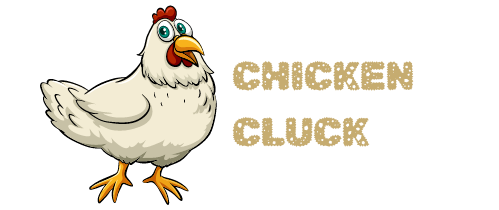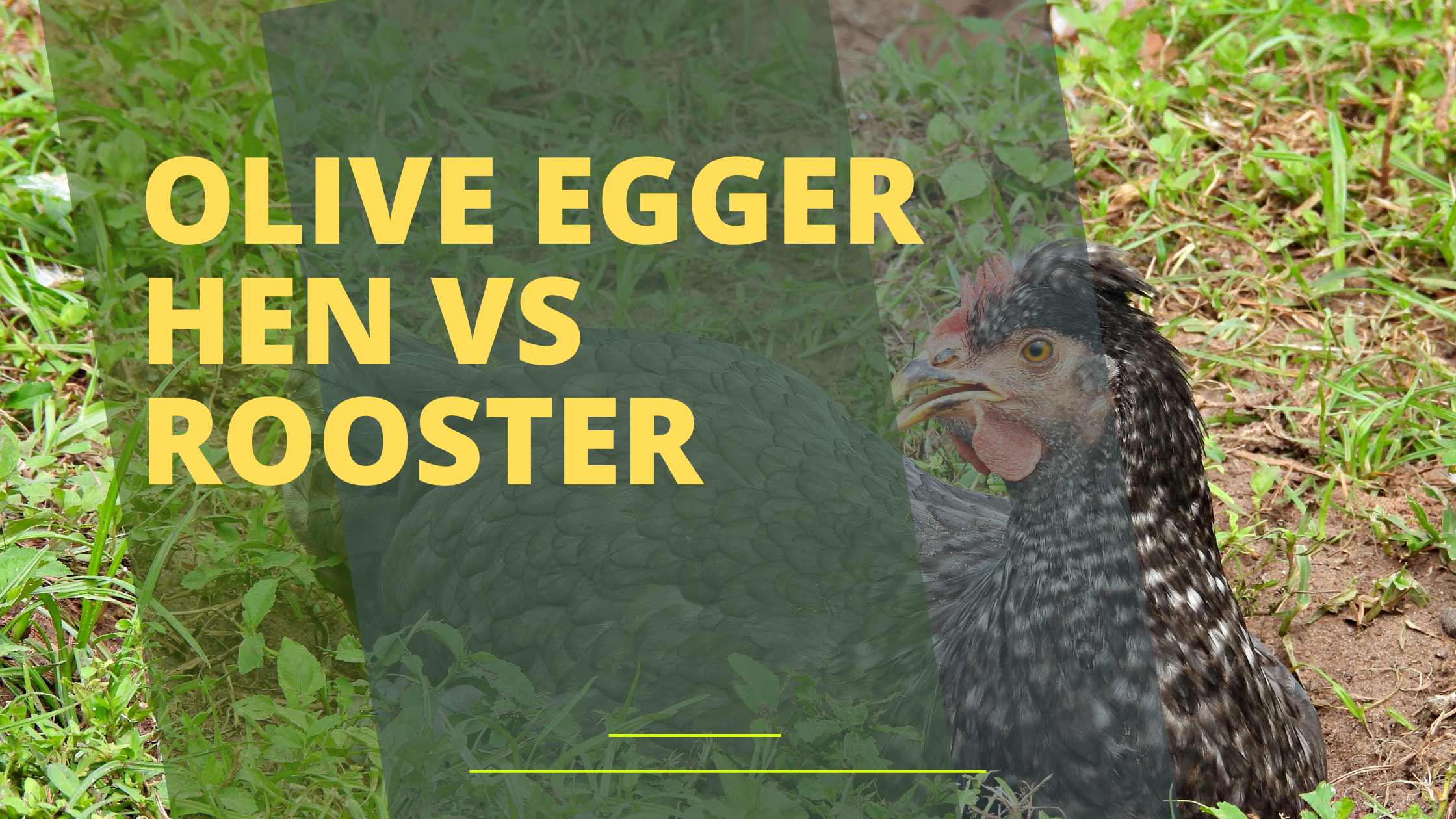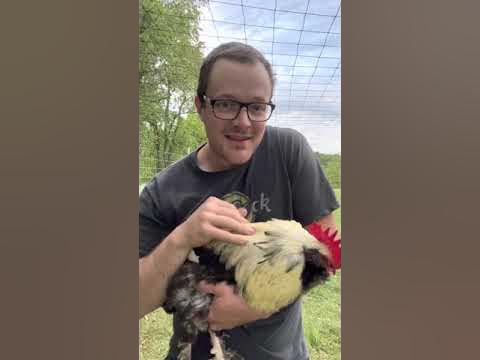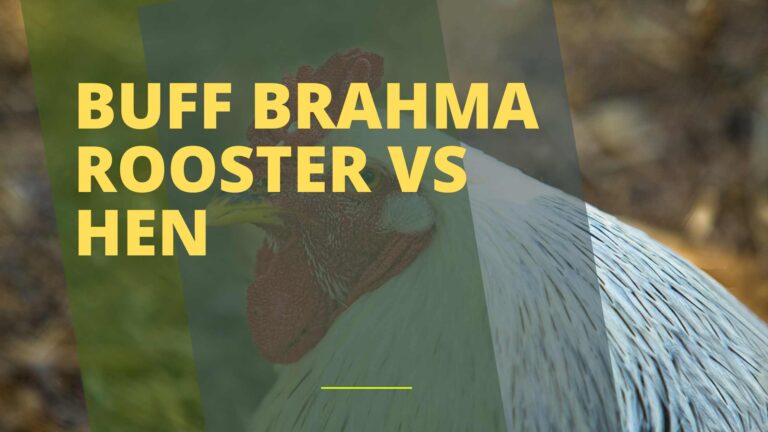Code: BD512CD
Olive Egger hens lay distinctive olive-colored eggs, while roosters do not. Roosters are typically larger with more vibrant feathering.
Olive Egger chickens are a popular choice for backyard poultry enthusiasts seeking colorful egg baskets and hardy, dual-purpose birds. This breed is a cross between a chicken that lays blue eggs, like the Araucana or Ameraucana, and a brown egg layer, often a Marans.
Their unique egg color comes from a blue egg gene layer being covered by a brown pigment. Both hens and roosters are known for their docile temperament and cold-hardiness, making them an excellent option for varied climates. With the growing trend in backyard farming, Olive Eggers offer an appealing combination of practicality and visual appeal. Their eggs not only add a pop of color to any carton but also come with the added bonus of a hen that is generally friendly and easy to manage.

The Unique Breed: Olive Egger
The Olive Egger isn’t your everyday chicken. This chicken lays distinct, olive-colored eggs. A blend of two popular breeds brings its exceptional traits to life. These hens are as captivating in appearance as their eggs are in color. Explore the origins and characteristics of the Olive Egger below.
Origins And Characteristics
Olive Eggers captivate poultry enthusiasts. Their feathers range from dark tones to shimmering iridescence. Not just pretty faces, these chickens are hardy and friendly. Let’s delve into their roots and traits:
- Genetic Mix: A mix between dark brown egg layers and blue egg layers.
- Egg Color: Eggs boast unique olive hues, varying in depth.
- Personality: Known for their docile and sociable nature.
- Adaptability: They thrive in varied climates, both cold and hot.
The Creation Of Olive Egger Chickens
The Olive Egger breed is a magical result of careful breeding. It blends the genes of hens laying rich brown eggs with roosters from blue egg-laying lines. This meticulous mix gives rise to the olive-colored eggs adored by many. The table below shows the breeds often crossed to create Olive Eggers:
| Brown Egg Layer | Blue Egg Layer | Olive Egg Result |
|---|---|---|
| Barnevelder | Ameraucana | Olive Egger |
| Marans | Leghorn | Olive Egger |
| Welsummer | Cream Legbar | Olive Egger |
Breeders often experiment with different combinations to perfect the olive shade of the eggs. The resulting Olive Eggers inherit the resilient qualities of their parents. They make excellent additions to a backyard flock.
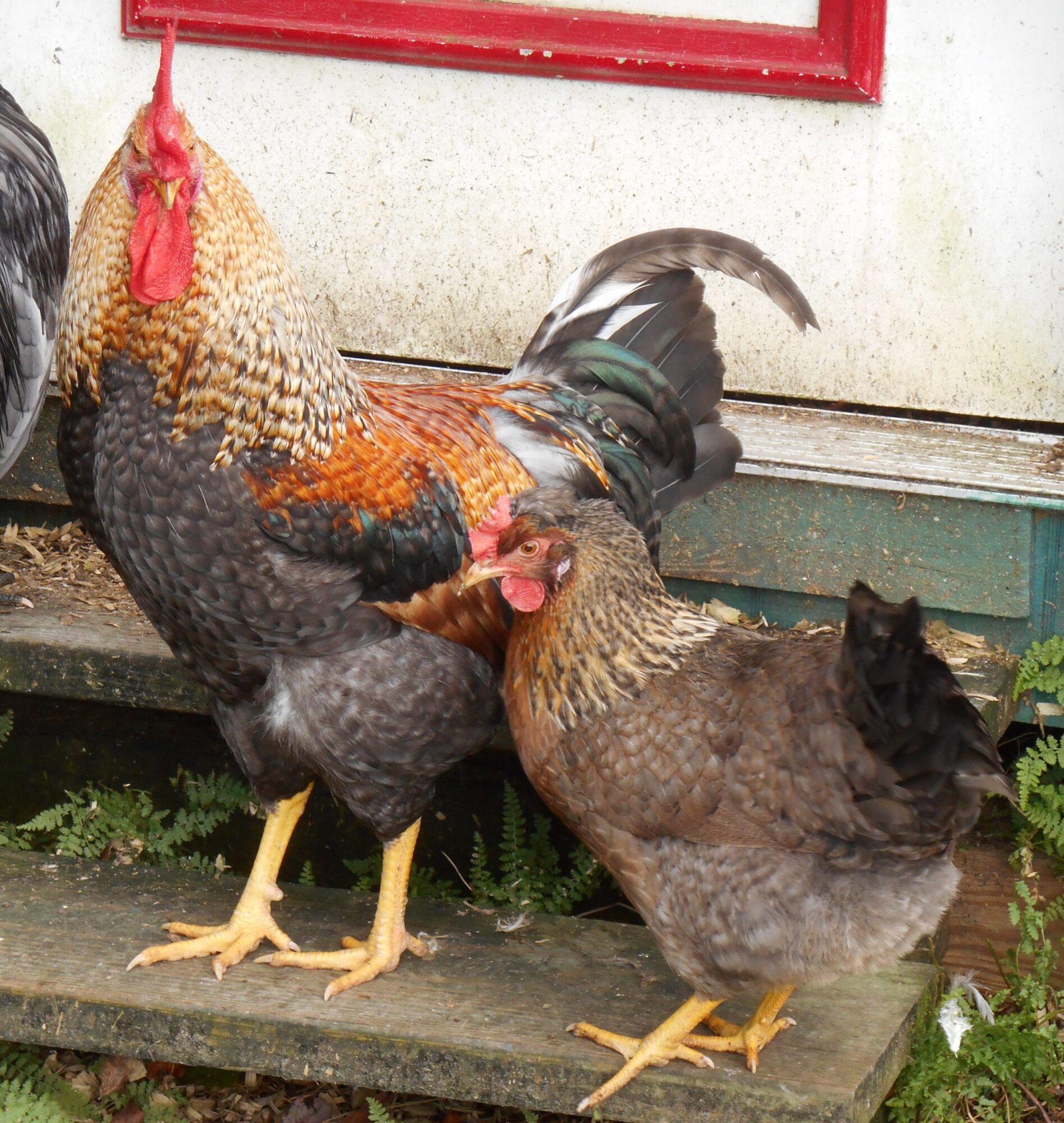
Credit: www.cacklehatchery.com
Physical Traits Of Olive Egger Chickens
Welcome to an exploration of the unique physical characteristics of Olive Egger chickens. Popular amongst poultry enthusiasts, Olive Eggers are a hybrid, bred for their distinctive egg color and robustness. Delve into the defining features that set the hens and roosters apart, showcasing their captivating appearance and distinct traits. In this section, we focus on the visual distinctions between hens and roosters, shedding light on what makes each gender special.
Hen Appearance And Features
Olive Egger hens exhibit a fascinating array of features:
- Their feathers often showcase a mix of earth tones, ranging from dark browns to soft greens.
- A typical hen sports a broad, round body with a sturdy build.
- They have well-defined full breasts and wide-set legs that denote their strength.
Equipped with a medium-size comb, the hens display a flaunting array of red against their muted feather backdrop. They possess a robust stature with a solid frame that supports their egg-laying prowess.
| Feature | Description |
|---|---|
| Eyes | Bright and alert, reflecting shades of orange or red. |
| Wattles | Smooth and red, adding contrast to their feathering. |
| Eggs | Produce signature olive-colored eggs, a delight for poultry lovers. |
Rooster Distinctions
In contrast, Olive Egger roosters stand tall with their own splendid traits:
- They showcase a striking, iridescent tail that catches the light beautifully.
- A large, prominent comb sits atop their heads, exuding confidence.
- With long, strong legs, they display an air of authority and grace.
Radiating with a bold plumage often darker and more vibrant than the hens, roosters command attention. Their hackles—long, flowing feathers around the neck—often glisten with hints of burgundy and emerald.
- Fierce and watchful, their eyes are akin to small, shining beacons.
- Impressive spurs on their legs reveal their protective instincts.
Respectively, the roosters carry themselves with a regal bearing, serving as the flock’s striking guardians.
Behavioral Comparison
Olive Egger chickens have distinct behaviors. This comparison highlights the differences between hens and roosters. Both play unique roles within their flock. Yet their actions vary widely.
Social Dynamics In The Flock
Olive Egger hens exhibit social tendencies. They often move together. This behavior promotes cohesion and safety. Hens cluck softly to communicate needs and warnings.
Roosters, on the other hand, serve as leaders. They scout for food and alert the flock to danger with distinct calls. Their protective nature is evident.
- Hens follow the rooster’s lead
- Roosters often take a higher vantage point
- Both have a pecking order that maintains order
Territorial Instincts And Leadership
The roosters command the flock space. Their leadership is vital.
They patrol the area and fend off intruders. Hens possess territorial instincts too, but less aggressive. They focus on nest protection.
| Behavior | Hens | Roosters |
|---|---|---|
| Space Guarding | Nests | Entire Flock Area |
| Leadership Role | Followers | Protectors & Leaders |
Egg Production Factors
Olive Egger chickens are well-known for their unique eggs. When comparing hens and roosters, remember only hens lay eggs. But how these eggs turn out depends on several factors.
Egg Color And Size
Olive Egger hens lay eggs with a distinctive olive-green color. This color comes from crossing birds that lay brown eggs, such as Marans, with birds that lay blue eggs, like Ameraucanas. The size of the eggs largely depends on the hen’s age and health. Younger hens often start with smaller eggs that increase in size as they mature.
| Age | Egg Size |
|---|---|
| Young Hens | Small to Medium |
| Mature Hens | Large |
Laying Frequency And Seasonality
Olive Egger hens have a laying pattern that differs throughout the year. Typically, they will lay 4-5 eggs per week. But, their laying frequency can change with the seasons. Longer daylight hours in spring and summer often lead to more eggs. Shorter days in fall and winter may result in a decreased laying frequency.
- Spring/Summer: High laying frequency
- Fall/Winter: Lower laying frequency

Raising Olive Egger Chickens
Welcome to the enriching world of raising Olive Egger chickens! Whether you’re an experienced farmer or a backyard enthusiast, the journey of caring for these charming birds is both rewarding and enjoyable. Olive Eggers, a crossbreed known for their beautiful olive-colored eggs, require specific care to thrive. Let’s dive into the essentials of diet, nutrition, and housing needs to ensure your feathered friends are happy and healthy.
Diet And Nutrition
Feeding Olive Egger chickens a balanced diet is crucial. Their diet significantly influences their health, egg production, and overall well-being. Here’s what they need:
- Layers pellets: Rich in protein, these support egg production.
- Grit: Necessary for digestion, provides essential minerals.
- Fresh greens: Offer vitamins and enhance yolk color.
- Clean water: Essential, always keep it available.
Remember to offer treats like mealworms and kitchen scraps in moderation. Treats should never make up more than 10% of their diet.
Housing Needs
Comfortable housing is vital for your Olive Egger chickens. A safe coop protects them from predators and harsh weather. Here’s what to keep in mind:
| Feature | Requirement |
|---|---|
| Space | At least 4 square feet per chicken inside the coop |
| Ventilation | Adequate airflow without drafts |
| Nesting boxes | One box for every 3-4 hens |
| Perches | Enough space for all chickens to roost comfortably |
Regular cleaning and maintenance keep the coop a healthy environment. Protecting your flock from inclement weather is also essential. Provide a run for them to enjoy the outdoors safely.
Health And Wellness
Owning Olive Egger chickens means keeping their health at the forefront. Healthy chickens are happy producers. Explore the health concerns specific to Olive Eggers and learn how to keep these feathered friends thriving.
Common Health Issues
Olive Eggers, like all poultry, are prone to certain health problems. Being aware of these issues ensures early detection and treatment.
- Parasitic infestations such as mites and lice are common.
- Respiratory infections can occur, especially in damp conditions.
- They may develop digestive disorders if fed poor-quality feed.
- Fungal diseases, like aspergillosis, affect birds in wet environments.
Preventive Care And Treatments
Preventing illness is key in Olive Egger care. A proactive approach minimizes risks.
| Preventive Measure | Benefit |
|---|---|
| Clean housing | Reduces disease and parasite spread |
| Quality feed | Ensures good health and egg production |
| Vaccinations | Protects against common poultry diseases |
| Regular check-ups | Early detection and treatment of issues |
If health issues arise, prompt treatment is crucial. Consult a veterinarian who specializes in poultry for targeted care plans.
- Deworming for internal parasites.
- Antibiotics for bacterial infections, as prescribed.
- Anti-fungal medications for fungal diseases.
- Pesticide treatments for mites and lice infestations.
Breeding Olive Egger Chickens
Breeding Olive Egger chickens is an exciting adventure. It meshes the rich tones of a Maran’s egg with the blue shades of an Ameraucana’s. This creates olive green eggs — a unique twist for any flock. But how do you breed these birds? It’s about the right hen, the correct rooster, and understanding genetics.
Genetics And Crossbreeding
- Olive Egger chickens result from mixing two specific breeds: Marans, with their dark-brown eggs, and Ameraucanas or Araucanas, known for their blue eggs.
- The resulting chick has one set of genes for brown shell color and another for blue. This combination expresses as olive green.
- To get eggs of consistent color, careful selection of parent stock is essential.
- The term punnett square may sound complex, but it’s just a tool. Breeders use this to predict the egg color.
Selecting Hens And Roosters For Breeding
| Breeding Goal | Hen Characteristics | Rooster Characteristics |
|---|---|---|
| Shell Color | Dark brown egg layer | Blue egg heritage |
| Health & Vigor | Strong, active, and disease-free | Robust, alert, and good fertility |
| Temperament | Gentle and good flock member | Non-aggressive and protective |
When selecting breeders, always keep in mind your end goal. Choose egg color carefully, but don’t ignore health and temperament. Both are key to long-term breeding success. A perfect Olive Egger flock is a balance. It combines great egg color with strong, friendly birds. Remember, happy and healthy chickens make better producers. So select with care and watch your Olive Egger flock flourish.
Note: This content is for breeding and educational purposes. Always consult with a vet or breeding specialist for professional advice.
Pros And Cons Of Olive Eggers
Olive Eggers are a unique hybrid for poultry enthusiasts, celebrated for their distinctive green eggs. They come from a cross between a blue egg-laying breed, like the Ameraucana or Cream Legbar, and a dark brown egg layer, such as a Marans or Welsummer. Understanding the advantages and challenges of rearing Olive Eggers helps poultry keepers make informed decisions.
Advantages Of Rearing Olive Eggers
- Unique Egg Color: Their eggs boast a beautiful olive green hue, making them a standout in any egg basket.
- Dual-Purpose Breed: Suitable for both egg production and meat, Olive Eggers serve multiple uses on a homestead.
- Hardy Creatures: They are robust and adapt well to different environments.
- Great Foragers: They are excellent at finding their food, which can lower feed costs.
- Gentle Temperament: Olive Eggers typically display a calm demeanor, making them a pleasant addition to any flock.
Potential Challenges
- Consistency in Egg Color: The shade of green can vary, which may disappoint those seeking uniformity.
- Variable Temperaments: As hybrids, their behavior may differ, unlike purebreds with established traits.
- Predicting Lifespan: Crossbreeds can sometimes present challenges in anticipating health issues and lifespan.
| Hen (Female) | Rooster (Male) |
|---|---|
| Lays olive green eggs | Brighter plumage for courtship displays |
| Smaller in size | Larger and more robust |
| Generally quieter | Known for crowing and being more vocal |
Choosing Between Hens And Roosters
Embarking on poultry keeping stirs up the question: hens or roosters? Each bird plays a unique role in the backyard coop. Olive Egger birds, known for their charming green eggs, make the decision even more intriguing. Do you desire a steady supply of eggs or a majestic flock leader? Your purpose becomes the deciding factor.
Considerations For Egg Producers
Egg production is a primary reason to choose Olive Egger hens. Unlike roosters, hens lay eggs, offering the joy of farm-fresh produce right from your backyard. Reflect on these points when making your choice:
- Space: Hens need nesting areas to lay eggs.
- Diet: Laying hens require calcium-rich food for strong eggshells.
- Management: Frequent egg collection keeps hens comfortable and eggs clean.
| Feature | Hen | Rooster |
|---|---|---|
| Egg Laying | Yes | No |
| Diet Needs | High in calcium | Regular feed |
Roles In Flock Dynamics
Flock dynamics are influenced by the presence of hens and roosters. Consider these roles:
- Roster: The rooster maintains order and provides protection.
- Hen: Hens foster a nurturing environment and can be motherly.
Choose wisely based on the flock personality you wish to establish. One rooster usually suffices, as multiple can cause aggression. Hens, conversely, create a laying brigade that fills your egg baskets.
Conclusion
Deciding between an Olive Egger hen and a rooster depends on your goals. For vibrant eggs, choose a hen. If flock management is key, consider a rooster. Each bird offers unique benefits for backyard poultry enthusiasts. Embrace the journey, respecting these distinct and dynamic feathered friends.
